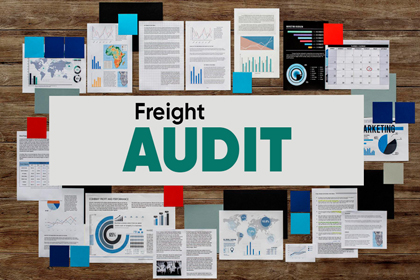In today's logistics industry, Transport Management Systems (TMS) are indispensable for optimizing supply chain efficiency, reducing operational costs, and improving customer satisfaction. However, the key to maximizing the value of a TMS lies in its swift and effective implementation. The quicker your TMS goes live and integrates with your operations, the sooner you start reaping the benefits.
In this blog, we’ll break down the essential steps for a successful TMS implementation that accelerates your time-to-value and ensures seamless operation right from the start.

1. Assess Your Requirements and Goals
Before diving into TMS implementation, it's crucial to understand your organization's logistics needs and overall business objectives. Engage key stakeholders from various departments such as logistics, finance, and IT to identify the problems you want to solve. Whether it's automating dispatch planning, enhancing route optimization, or reducing transportation costs, having clear goals will guide you in selecting the right TMS and implementing it efficiently.
Key Questions to Address:
- What are your logistics pain points?
- How do you measure success?
- What integrations (ERP, CRM, etc.) are needed for smooth operation?
2. Choose the Right TMS
Selecting a TMS that aligns with your business needs is critical. Look for a solution that is scalable, flexible, and capable of integrating with your existing systems. Cloud-based TMS solutions like NaaviQ offer the advantage of quick deployment, minimal upfront costs, and ease of updates.
- Real-time tracking and reporting
- Route optimization
- Seamless integration with your current systems
- Automation capabilities for dispatch, invoicing, and inventory
3. Plan for Change Management
Successful TMS implementation isn’t just about technology; it’s also about people. Employees across your organization need to understand how the new system will affect their daily workflows. Invest in proper training and create a strong communication plan to handle resistance to change. Ensure that the system is user-friendly and that teams can easily adapt to it.
Tips for Successful Change Management:
- Involve employees early in the process
- Provide hands-on training
- Establish a feedback loop for ongoing support
4. Set Up Seamless Integration
One of the most critical aspects of TMS implementation is ensuring seamless integration with your existing software ecosystem—ERP systems, CRM, WMS, and accounting software. Without proper integration, your TMS might become a bottleneck rather than a solution. Work closely with your TMS provider to configure integrations that align with your operations and business processes.
Common Integrations:
- ERP (Enterprise Resource Planning) for centralizing operations
- WMS (Warehouse Management System) for better inventory control
- CRM (Customer Relationship Management) for enhanced customer service
5.Pilot the System Before Full-Scale Launch
Rather than implementing the TMS across your entire organization all at once, consider a pilot run in a specific department or location. This allows you to identify any issues early on, gather feedback from users, and make necessary adjustments before a full rollout.
Steps for a Successful Pilot:
- Choose a test group with diverse logistics needs
- Monitor the system’s performance
- Collect feedback and make adjustments
6. Focus on Continuous Improvement
Even after you’ve implemented your TMS, there’s always room for optimization. Regularly review your system’s performance against your initial goals and KPIs (Key Performance Indicators). Many TMS solutions, like NaaviQ, offer real-time analytics and reporting, enabling you to continuously refine your processes and extract even more value.
Areas to Focus On:
- Route efficiency and cost savings
- On-time deliveries
- Customer satisfaction
- Reduction in manual errors
7. Leverage Automation for Faster Value
TMS is most valuable when it automates manual tasks like dispatch scheduling, route planning, and invoicing. With advanced automation, companies can cut operational costs, reduce manual errors, and ensure a smoother workflow, which ultimately leads to faster value realization. Solutions like NaaviQ TMS come with built-in automation features designed to streamline complex logistics operations.
Conclusion: Realize Value Faster with NaaviQ TMS
Implementing a TMS is a transformative step for any logistics-driven organization. By carefully planning your approach, ensuring seamless integration, and focusing on automation and continuous improvement, you can realize the full value of your system faster than ever. With NaaviQ TMS, you not only get a highly scalable and flexible solution but also benefit from quick deployment and cutting-edge features that ensure you stay ahead of the curve.
Ready to streamline your logistics operations and realize value faster?
[Schedule a Demo with NaaviQ TMS Today!]




